Have you come across a pop-up message saying “ERROR CODE 72” that claims your computer is infected with viruses like the Trojan horse, CSRSS.EXE Trojan, porn spyware, and phishing malware? The message might also warn that your computer window is disabled and urges you to call support immediately.
Question: Are these “ERROR CODE 72” alerts legitimate?
Investigation Findings: The alert is identified as a scam. Typically, the pop-up might display the following message:
ERROR CODE 72
Call support +1-833-378-3348
This computer window is disabled.
This computer is infected with Trojan horse virus.
Your computer warns you that you are infected with porn spyware and viruses.
1. Trojan horse virus
2. CSRSS.EXE Trojan virus
3. Porn spyware
4. Phishing malware
Please call within 5 minutes.
Security experts have confirmed that these pop-ups are designed to deceive. They emulate legitimate Microsoft security notifications but include fraudulent contact numbers. The scam often varies slightly in presentation, indicating the use of a template for widespread fraudulent activities.
Answer: “ERROR CODE 72” is a fraudulent pop-up designed to scare you into calling a fake support number. 💡Pop-up messages urging you to call support numbers are not legitimate. No reputable company would issue security warnings through such pop-ups or request users to contact support through any displayed numbers. If you suspect your computer is compromised, use antivirus software for diagnostics and refer to the official website of your operating system or antivirus provider for verified support options. Avoid interacting with or calling numbers from these deceptive pop-ups.
Table of Contents
🚨 Is the “ERROR CODE 72” Pop-up a Scam?
Yes, the pop-up alert claiming your computer is infected with high-risk malware and urging you to call a support number is definitely a scam. 🚫 If you encounter such a pop-up, exercise extreme caution. The assertions are completely false and designed to create panic, misleading you into contacting fake support services where you may be manipulated into providing personal information or making payments.
Background on the “ERROR CODE 72” Scam:
This scam is a form of tech support fraud where fraudsters impersonate major tech companies like Microsoft. The scammers create alarming pop-up messages that warn of malware infections, compromised personal data, and blocked computer access, insisting that the issues can only be resolved through the phone numbers provided in the message.
However, Microsoft and other legitimate tech companies have clarified that they do not send unsolicited warnings or demand remote access to devices via such pop-ups. Official support usually requires going through proper channels on the company’s official website, not through unsolicited pop-ups or phone calls.
According to the Federal Trade Commission, Americans lost over $328 million to tech support scams, a figure that underscores the prevalence of these fraudulent activities. Microsoft reports receiving about 6,500 complaints globally from people who’ve been the victim of a tech support scam, highlighting the widespread nature of the issue.
These scams have become increasingly sophisticated, using scare tactics to trick users into panicking and acting hastily. Government and cybersecurity organizations have issued warnings about these scams, noting they have affected countless individuals globally, exploiting the trust people have in their operating systems and supposed tech support.
The fraudulent pop-ups often claim an “urgent need” to contact support and include alarming, but entirely false, reports of security breaches, directing victims to call a number where they are further scammed.
🚩 Red Flags to Watch Out For:
To protect yourself, be aware of these warning signs of the scam: 🔍🛡️
- 📧 Unsolicited Alerts: Unexpected pop-ups claiming that your computer is severely compromised.
- 🔗 Suspicious Phone Numbers: These scams include phone numbers that are not associated with the claimed company’s official support contacts.
- ⏳ Urgency and Imposed Deadlines: These messages create a sense of urgency, pressuring you into immediate action to fix problems that do not actually exist.
- 💳 Requests for Payment: Be wary of any demands for payment over the phone for tech support or malware removal, especially if you did not initiate the contact.
- 👤 Anonymity of the Communication: Scammers might use generic greetings or lack details that a legitimate tech company would have regarding your device or account status.
- 🔄 No Verifiable Evidence: Genuine alerts from tech companies will provide a clear path to verify the issue independently through official channels, not force immediate action over the phone.
🕵️♂️ How the “ERROR CODE 72” Pop-up Scam Works
The “ERROR CODE 72” pop-up scam is a form of social engineering designed to instill panic and urgency, tricking users into believing their computers are severely compromised. Understanding the mechanics of this scam is crucial for your digital safety. 💡🔐
🚨 Exploiting Your Security Concerns
The scam typically starts with a pop-up alert claiming your computer has been infected with a high-risk virus or malware. It exploits your natural concern for personal data security, compelling you to follow the scammer’s instructions without skepticism.
🔗 Mimicking Official Microsoft Alerts
The fraudulent pop-up includes a phone number and often simulates a Windows security interface to appear legitimate. This deception is aimed at convincing you that the alert is genuinely from Microsoft.
🎭 Fabricated Threats and Immediate Actions
Upon engaging with the scam, you’re presented with alarming messages about stolen personal information and threats to your computer’s integrity, creating a false sense of immediacy. Scammers pressure you to act quickly to resolve these non-existent threats.
📥 Soliciting Direct Contact
The pop-up urges you to call a specific phone number, where so-called technicians offer to help remove the malware. This step is aimed at establishing direct communication to further manipulate victims.
🔄 Creating a False Sense of Urgency
Scammers fabricate an emergency situation, insisting that immediate action is necessary to prevent data loss or further infections. This tactic is used to push victims into making hasty decisions without verifying the information.
🕳️ Remote Access and Financial Exploitation
Once contact is made, the fake technicians often request remote access to your computer under the pretense of technical support, which they use to install actual malware or steal sensitive information. Additionally, they may ask for payment for their “services,” directly targeting your financial resources.
By understanding these tactics, you can better protect yourself against the “ERROR CODE 72” pop-up scam and similar threats. Always be skeptical of unsolicited warnings and contact tech support through verified channels only.
Beware of Similar Scams
The ‘ERROR CODE 72’ scam is only one example of many scams online that aim to trick you into giving up your personal information and money. Scammers are using more sophisticated methods, including phishing sites, fake security alerts, and disguising themselves as legitimate antivirus software. Other recent scams similar to this one include the Hard Drive Damage Pop-Up, ‘Your Card Payment Has Failed – Renew Subscription’ and the Virus Found (3) Pop-Up.
Hard Drive Damage Pop-Up Scam
In this scam, users receive a pop-up warning claiming that their hard drive is damaged or corrupted due to a virus or malware. It often includes technical jargon and error codes to appear authentic. The pop-up typically advises the user to download a ‘repair tool’ or contact a ‘support number’. However, the tool is usually malware, and the support number connects to scammers who try to gain remote access to the user’s computer or sell unnecessary services.
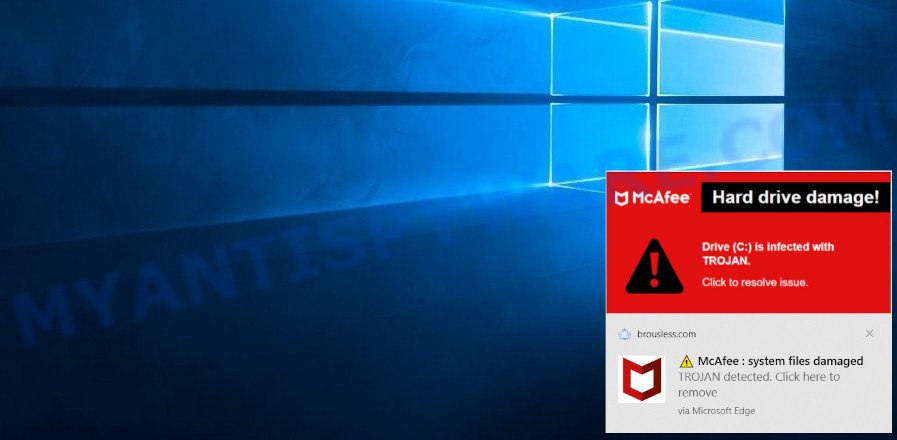
Virus Found (3) Pop-Up Scam
This particular scam involves a pop-up alert claiming that three viruses have been detected on the user’s device. It’s designed to mimic the look and feel of legitimate antivirus software alerts to convince users of its authenticity. The pop-up often includes a timer, adding a sense of urgency to the warning. Users are prompted to click on a button to remove the viruses, which either leads to the download of actual malware or redirects to a site asking for personal information or payment to ‘clean’ the computer.
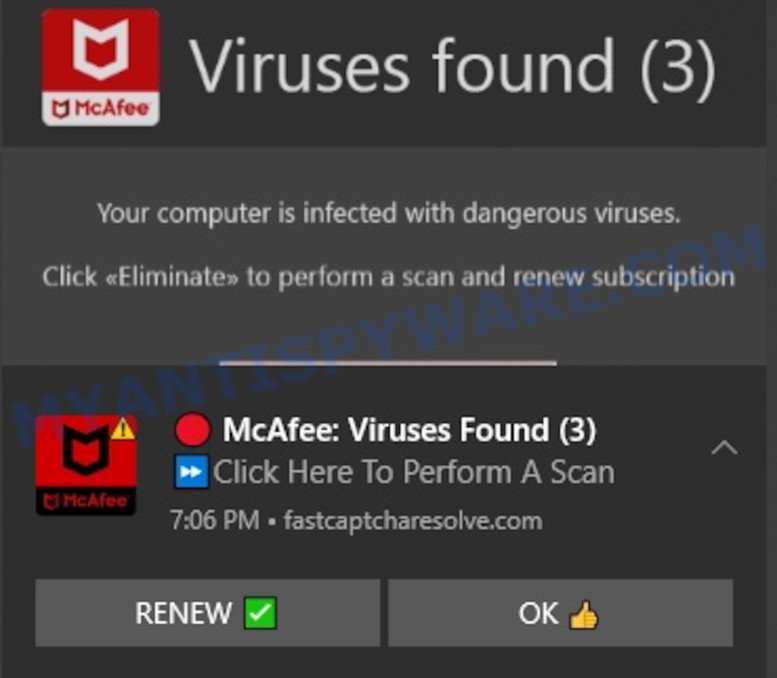
Your Card Payment Has Failed – Renew Subscription Scam
This scam targets users with a false notification that their credit card payment for a subscription service (like antivirus or streaming) has failed. The message prompts immediate action, urging the user to click on a link to ‘renew’ or ‘update’ their payment information. Once clicked, it leads to a fake website where personal and financial details are requested, putting the user at risk of identity theft and financial fraud.
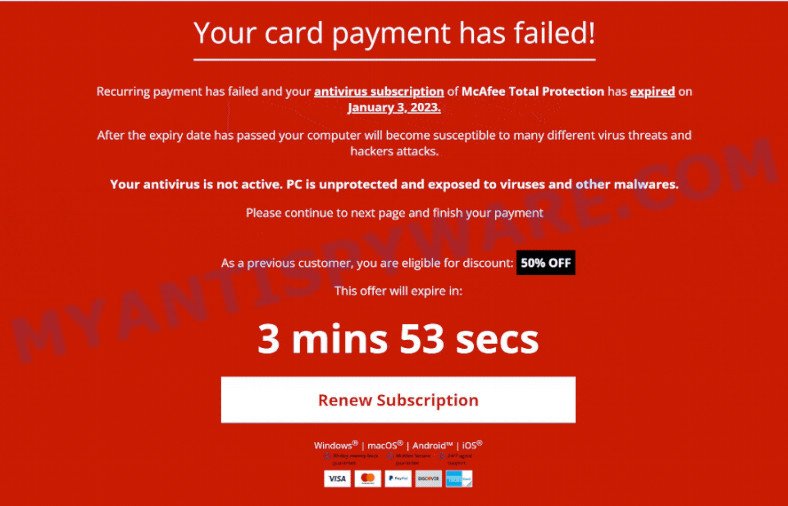
All these scams share a common strategy: they create a sense of urgency and fear to compel the user to take immediate action, which often leads to compromising personal security or financial loss. It’s vital to approach such alerts with skepticism and verify their authenticity before taking any action.
How to Spot Tech Support Scams
Scammers are getting better at making fake alerts look real, especially those that falsely use the Microsoft name. These pop-ups are designed to scare you into thinking your computer has serious problems. It’s important to know how to spot these fakes to keep your computer safe from harm.

Here, we’ll show you how to identify Tech Support scams. These are fake warnings that pop up in your browser, falsely claiming that your computer is at risk and urging you to call a support number. Recognizing these scams helps you avoid them.
- Look at the pop-up’s design. Scam pop-ups might look similar to Microsoft’s actual alerts but often have small mistakes in the design or layout, such as low-quality logos or unusual fonts.
- Read the message carefully. Real Microsoft warnings never ask you to call a phone number. Be wary of any pop-up that does.
- Check the address in your browser’s address bar. A genuine Microsoft warning will not appear in your web browser but rather through official software. If a pop-up appears in your browser claiming to be from Microsoft, check the URL – it’s likely not from Microsoft if the website address seems odd or unrelated.
- Notice the greeting used. Fake alerts often start with vague greetings like “Dear user” or “Hello, Windows user,” which Microsoft does not use.
- Ignore sudden contact requests. If a pop-up unexpectedly says your PC is infected and asks you to call a number, it’s almost certainly a scam. Microsoft does not alert you to viruses or security issues through your web browser.
- Be careful with pop-up interactions. Do not click anywhere on a suspicious pop-up, including the ‘close’ button, as this could start a malware download. Instead, close your entire browser using Task Manager.
By learning these signs, you can recognize “ERROR CODE 72” pop-up scams and protect your computer.
Threat Summary
| Name | “ERROR CODE 72” Pop-up Scam |
| Type | Tech Support Scam |
| Fake Claims | Claims of a PC being blocked due to spyware infection, urging users to call a fake support number to prevent identity theft and unblock the device. |
| Scam texts | Microsoft protected your PC Call Helpline +1-833-378-3348 (Toll Free) Run anyway Back to Safety Call support ERROR CODE 72 Please call within 5 minutes. So that our expert engineers can guide you through the phone removal process to protect your identity. |
| Related Domains | errorcode-a55.ml, … |
| Scammers contacts | +1-833-378-3348, +81 050-5809-7644 |
| Distribution | Malicious advertisements, compromised websites, phishing emails, and software bundles |
| Damage | Deceives users into paying for unnecessary support services, risk of malware installation, and unauthorized access to personal information. |
| Symptoms | Unsolicited pop-ups claiming malware detection, fake Windows Defender alerts, and persistent prompts to call a bogus support number. |
| Removal | Terminate the browser process using Task Manager, reset browser settings, scan for malware using trusted security software, avoid restoring previous browsing sessions. |
How to remove ERROR CODE 72 pop-ups
If you have encountered “ERROR CODE 72” pop-ups, you should not trust the message and refrain from clicking any buttons or links that appear on the page. Instead, follow the steps below to remove the pop-up and any potential malware from your computer:
To remove ERROR CODE 72 pop ups, complete the steps below:
- Close the pop-up
- Clear your browsing history
- Disable push notifications
- Scan your computer for malware
- Reset your browser settings
Close the pop-up
Closing the pop-up is the first step you should take when dealing with the ERROR CODE 72 scam. Although it may seem like a simple task, some users may find it challenging, especially if the pop-up is designed to be persistent and difficult to close. This step is crucial because it prevents the user from falling into the trap set by the scammers and clicking on any of the buttons or links that can lead to further harm. In this section, we will provide a detailed guide on how to close the ERROR CODE 72 pop-up safely and effectively.
- Don’t click on anything within the pop-up as it could lead to further harm.
- Look for a small “X” or “Close” button within the pop-up window. Click on it to close the window.
- If there is no “X” or “Close” button, try pressing the “Esc” key on your keyboard to close the pop-up.
- If the pop-up still won’t close, try opening your computer’s Task Manager by pressing “Ctrl + Shift + Esc” on your keyboard (or “Ctrl + Alt + Delete” and then select “Task Manager”). Find the browser window that the pop-up is in, right-click on it, and select “End Task” to force close the window.
Clear your browsing history
Clearing your browsing history is an important step in removing ERROR CODE 72 pop-ups. These pop-ups often come from malicious websites that can be stored in your browsing history.
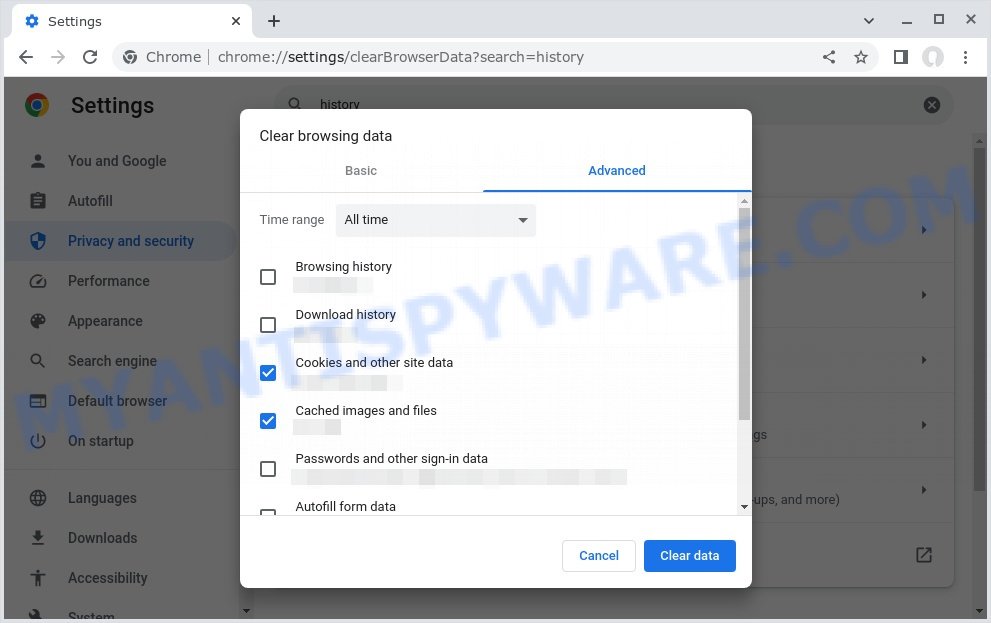
By clearing your browsing history, you can get rid of any traces of these websites and prevent the pop-ups from reappearing. In this step, we will walk you through how to clear your browsing history on different browsers.
- Open your browser’s settings or options menu. This can usually be accessed by clicking on the three dots or lines in the top right or left corner of the browser window.
- Scroll down to the “Privacy & Security” or “History” section of the settings menu.
- Click on “Clear Browsing Data” or “Clear History” (the wording may vary depending on the browser you are using).
- In the pop-up window that appears, choose the time range for which you want to clear your browsing history (e.g. “Last hour,” “Last 24 hours,” “All time,” etc.).
- Make sure that “Browsing history” or “History” is selected as one of the types of data to be cleared.
- Click on the “Clear Data” or “Clear History” button (the wording may vary depending on the browser you are using).
- Wait for the browser to finish clearing your browsing history. This may take a few moments, especially if you have a lot of browsing data stored on your computer.
- Close and restart your browser to ensure that the changes take effect.
Disable push notifications
If you’re experiencing persistent push notifications from websites that are showing ERROR CODE 72 scams, the best course of action is to disable push notifications altogether. Disabling push notifications prevents malicious websites from showing you unwanted pop-ups and alerts, which can help protect your computer from further harm. In this step, we’ll walk you through the process of disabling push notifications in your web browser.
Google Chrome:
- Click on ‘three dots menu’ button at the top-right corner of the Google Chrome window.
- Select ‘Settings’, scroll down to the bottom and click ‘Advanced’.
- At the ‘Privacy and Security’ section click ‘Site settings’.
- Click on ‘Notifications’.
- Locate the ERROR CODE 72 website and click the three vertical dots button next to it, then click on ‘Remove’.
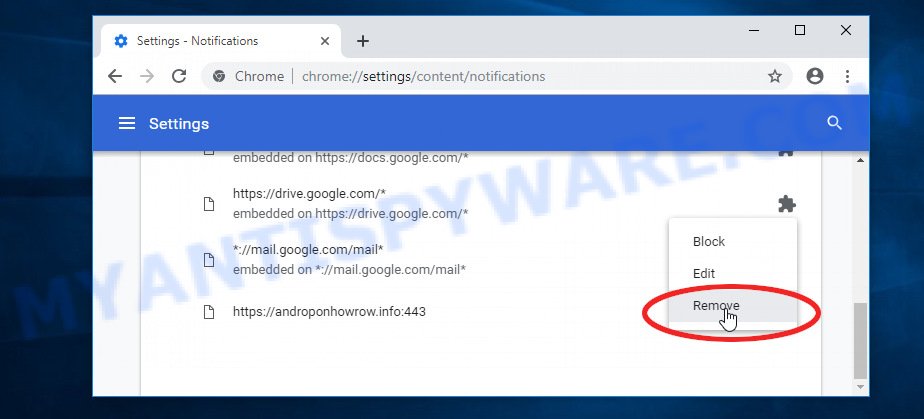
Android:
- Open Chrome.
- Tap on the Menu button (three dots) on the top right corner of the screen.
- In the menu tap ‘Settings’, scroll down to ‘Advanced’.
- In the ‘Site Settings’, tap on ‘Notifications’, locate the ERROR CODE 72 URL and tap on it.
- Tap the ‘Clean & Reset’ button and confirm.
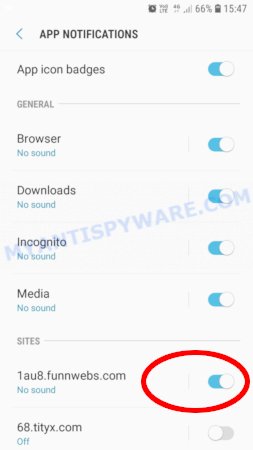
Mozilla Firefox:
- In the top right corner, click the Firefox menu (three bars).
- In the drop-down menu select ‘Options’. In the left side select ‘Privacy & Security’.
- Scroll down to ‘Permissions’ section and click ‘Settings…’ button next to ‘Notifications’.
- Find the ERROR CODE 72 website address, other suspicious URLs, click the drop-down menu and select ‘Block’.
- Click ‘Save Changes’ button.
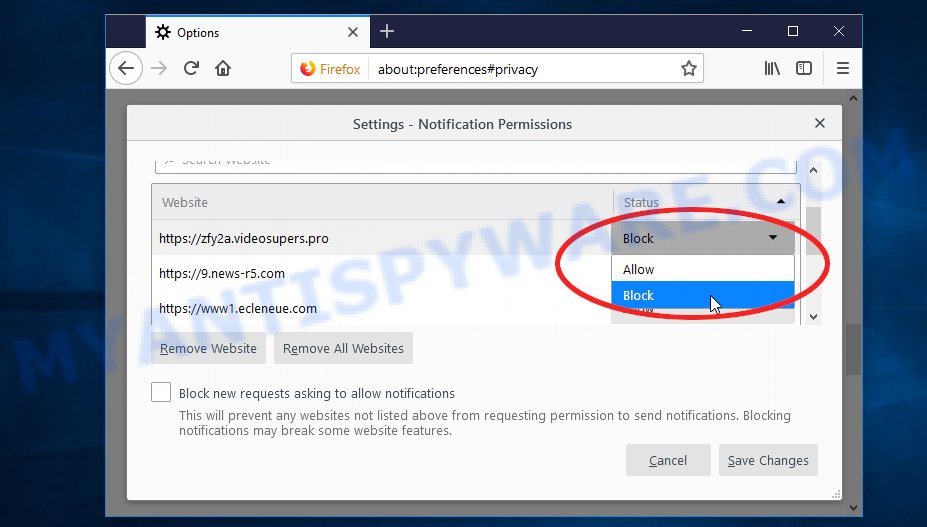
Edge:
- Click the More button (three dots) in the top-right corner of the window.
- Scroll down, locate and click ‘Settings’. In the left side select ‘Advanced’.
- In the ‘Website permissions’ section click ‘Manage permissions’.
- Disable the on switch for the ERROR CODE 72 domain.
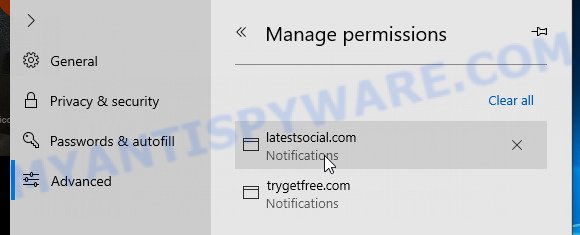
Internet Explorer:
- Click the Gear button on the top-right corner of the browser.
- Select ‘Internet options’.
- Click on the ‘Privacy’ tab and select ‘Settings’ in the pop-up blockers section.
- Locate the ERROR CODE 72 website and click the ‘Remove’ button to delete the site.
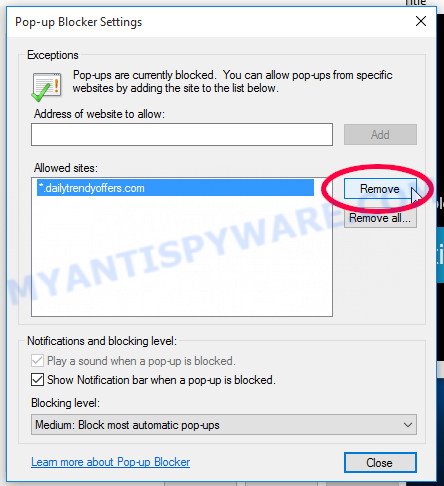
Safari:
- Go to ‘Preferences’ in the Safari menu.
- Select the ‘Websites’ tab and then select ‘Notifications’ section on the left panel.
- Find the ERROR CODE 72 site and select it, click the ‘Deny’ button.
Scan computer for malware
If you have encountered the ERROR CODE 72 pop-up scam, it is possible that your computer has been infected with malware. In order to ensure that your system is completely clean, it is important to perform a thorough scan for malware. This will help to identify any malicious files or programs that may be hiding on your computer and remove them to prevent further damage. In this step, we will guide you through the process of scanning your computer for malware using trusted antivirus software.
Malwarebytes is a reputable anti-malware program that can effectively detect and remove adware, potentially unwanted programs and malware. It has a user-friendly interface and offers both free and paid versions, with the paid version offering real-time protection and other advanced features. To use Malwarebytes to remove malicious software, you can download and install the program, perform a scan of your system, and follow the prompts to remove any detected threats.
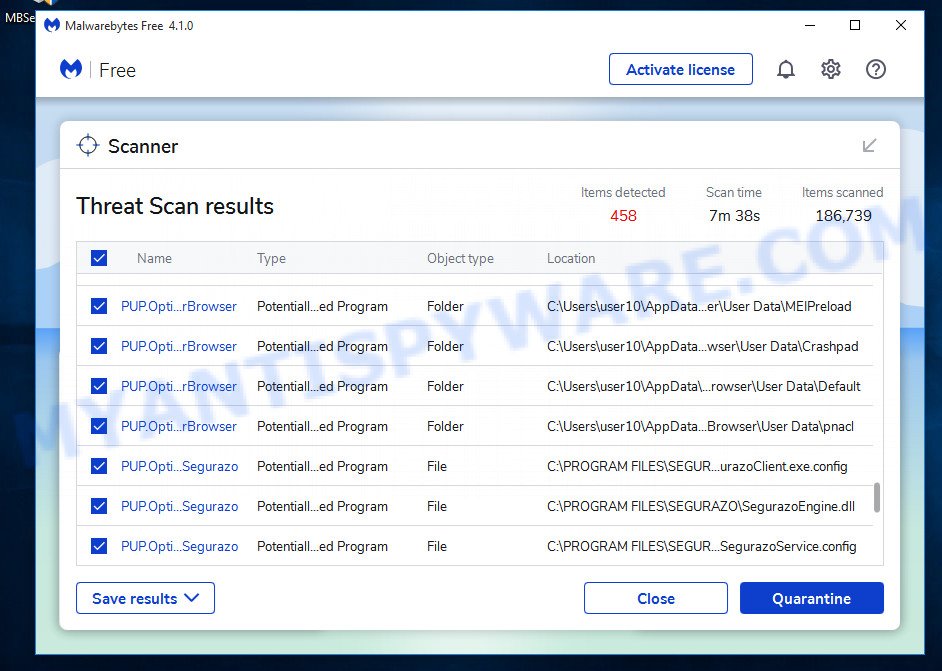
Visit the following link and download the latest version of Malwarebytes. Once the download is complete, run the installer and follow the instructions to install the program on your computer.
327294 downloads
Author: Malwarebytes
Category: Security tools
Update: April 15, 2020
Open Malwarebytes and click on the “Scan” button. The program will start scanning your computer for any malware or potentially unwanted programs. Depending on the size of your hard drive, this may take a few minutes to complete.
Once the scan is complete, Malwarebytes will display a list of any threats it has found. Review the list carefully and make sure that all the items are checked for removal. Then, click on the “Quarantine” button to remove the threats from your computer. After the removal process is complete, you may be prompted to restart your computer to complete the process.
Please follow this step-by-step video tutorial to learn how to use Malwarebytes to scan and remove any potential threats from your computer. The video will guide you through the entire process, from downloading and installing Malwarebytes to running a scan and removing any identified threats.
Reset your browser settings
If the ERROR CODE 72 pop-ups persist even after clearing your browsing history, disabling push notifications, and scanning your computer for malware, resetting your browser settings might be the next step to take. Resetting your browser settings can remove any unwanted extensions or changes made to your browser that may be causing the pop-ups to appear. In this step, we will guide you through the process of resetting your browser settings in different popular browsers.
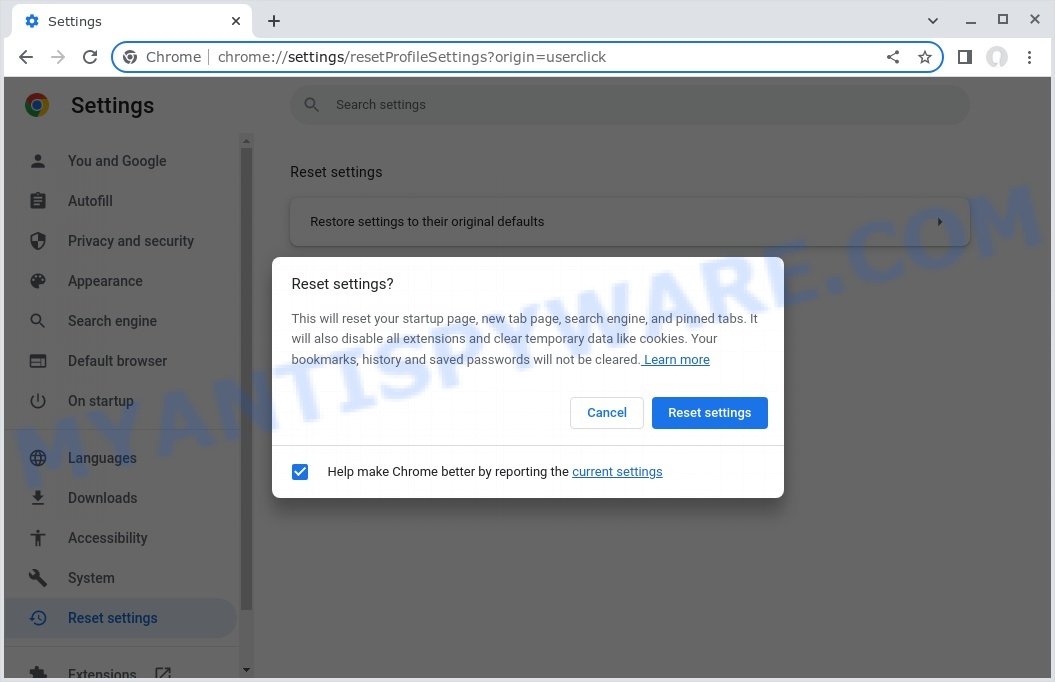
To reset your browser settings in Google Chrome:
- Open Chrome and click on the three-dot icon in the top-right corner.
- Select “Settings” from the drop-down menu.
- Scroll down to the bottom of the page and click on “Advanced.”
- Scroll down to the “Reset and cleanup” section and click on “Restore settings to their original defaults.”
- Click “Reset settings” to confirm.
To reset your browser settings in Mozilla Firefox:
- Open Firefox and click on the three-line icon in the top-right corner.
- Select “Help” from the drop-down menu and then click on “Troubleshooting Information.”
- Click on the “Refresh Firefox” button in the top-right corner.
- Click “Refresh Firefox” again to confirm.
To reset your browser settings in Microsoft Edge:
- Open Edge and click on the three-dot icon in the top-right corner.
- Select “Settings” from the drop-down menu.
- Scroll down and click on “Reset settings.”
- Click “Restore settings to their default values.”
- Click “Reset” to confirm.
After resetting your browser settings, be sure to check for any remaining suspicious extensions and remove them if necessary.
Protecting Yourself from the ERROR CODE 72 Scam
Now that you know how the ERROR CODE 72 scam works, how to identify similar scams, and how to remove the pop-ups, it’s important to take steps to protect yourself from falling victim to this or similar scams in the future.
Here are some additional steps you can take to protect yourself:
- Install reputable antivirus software. By installing antivirus software, you can help prevent these types of scams from infecting your computer in the first place. Make sure to keep your antivirus software up to date and run regular scans to ensure your computer remains protected.
- Be wary of emails or links that claim to be from legitimate companies, such as McAfee, especially if you didn’t request any information. Don’t click on links in emails from unknown sources or download attachments from them.
- Keeping your software up to date is one of the easiest and most effective ways to prevent security breaches. Software updates often contain security patches that fix vulnerabilities, so make sure to install them as soon as they become available.
- Educate yourself on common scams. Knowledge is power, and being aware of common scams and tactics used by cybercriminals can help you recognize and avoid them. Stay informed by reading up on the latest scams and how to protect yourself against them.
Conclusion
The “ERROR CODE 72” pop-up scam manipulates users with fake security alerts that resemble official Microsoft warnings. This scam skillfully deploys convincing pop-ups, alarming users with messages about non-existent malware infections, and prompts them to call a supposed support number for assistance. Individuals are misled into believing they are securing their computer by contacting these fake support lines. However, the actual intent behind these pop-ups is to deceive users into paying for unnecessary technical support services or granting remote access to their systems.
Bottom Line: Be wary of any unexpected security warnings that urge you to call a support number, especially those that mimic trusted entities like Microsoft. The safest course of action is to dismiss these pop-ups without interaction. 🛡️💻
Stay vigilant and always verify; any alert that urges immediate action or offers quick fixes over a phone call is likely a scam. 🤔
















